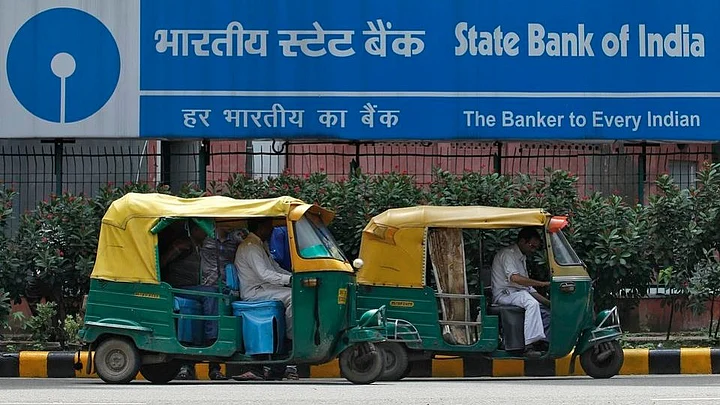State Bank of India Ltd (SBI) on Friday reported a strong set of earnings for the fourth quarter of the financial year 2016-17. The bank saw its profits more than double from the comparable quarter in 2016, when the lender was in the midst of a bad loan clean-up mandated by the Reserve Bank of India (RBI). That clean-up seems to have peaked with SBI reporting a decline in both its gross and net non-performing assets (NPA) ratio in the fourth quarter.
The celebration, however, may be short lived.
Starting with the financial year 2017-18, SBI will have a new set of worries to deal with. Effective 1 April, SBI’s five remaining associate banks were merged with the parent, and the consolidated picture presented post the merger is not encouraging.
For starters, the merged entity reported a net loss of Rs 3,300 crore in contrast to the standalone net profit of Rs 2,815 crore reported by the parent bank. This means that not only did the associate banks’ wipe out the parent bank’s profits, the losses were large enough to push the consolidated entity into the red.
Basel 3 disclosures submitted by the bank also show that the SBI management has another mammoth clean-up task facing it in fiscal 2018.
The consolidated bank has a gross non-performing assets (NPA) ratio of 9.04 percent, more than 2 percentage points higher than the parent bank. In absolute terms, the bank has gross bad loans of Rs 1.79 lakh crore to try and resolve. The Basel 3 disclosures show that a large chunk of these assets (Rs 71,377 crore) are concentrated in the ‘doubtful 2’ category, which holds assets that have remained doubtful for a period of 1-3 years. The longer an asset remains non-performing, the tougher it is to recover.
While SBI has pushed the associate banks to provision ahead of the merger, which is the reason for the large losses reported by them, the net NPA position of the merged entity is also weaker than that of the parent bank. The new SBI has a net NPA ratio of 5.15 percent.
Also Read: SBI Net Profit Jumps As Asset Quality Improves SBI Bad Loans Balloon, Post-Merger Provisioning May Rise
The associate banks reported a net loss of close to Rs 6,000 crore in the fourth quarter, driven by “continued harmonisation” of accounting policy with the parent bank, noted brokerage house Motilal Oswal, in a report on Saturday. The brokerage house added that the post-merger watch list of stressed loans remains large and stands at nearly 1.6 percent of total loans. The watch list remains concentrated in sectors like power, steel and telecom.
Credit Suisse shares the concern around asset quality pressures emerging from the associate banks.
“SBI parent core profitability and asset quality were distinctly superior to most PSUs. However, this has been dragged down with the subsidiary merger and pace of profitability rebuild will be the key driver for the stock,” said Credit Suisse in a report on Monday.
The bank’s capital adequacy position will also suffer mildly post the merger. The merged entity starts with a capital adequacy ratio of 12.35 percent compared to the 13.11 percent capital adequacy ratio that the parent bank was maintaining. Among the five associate banks that have now been merged with SBI, State Bank of Bikaner and Jaipur Ltd had the lowest capital adequacy ratio of 9.25 percent.
The consolidated financials were a disappointment even though the parent bank’s earnings surprised positively, said Investec Securities in a research note on Friday. Noting that the consolidated loss was steeper than expected, the brokerage house said that weak profitability at the merged bank may remain a concern in the current fiscal.
Motilal Oswal, in its note, added that while SBI is in a better place compared to other public sector banks to absorb a large scale merger. However, the integration of employees remains a challenge.
(This story was first published on BloombergQuint.)
(At The Quint, we question everything. Play an active role in shaping our journalism by becoming a member today.)
